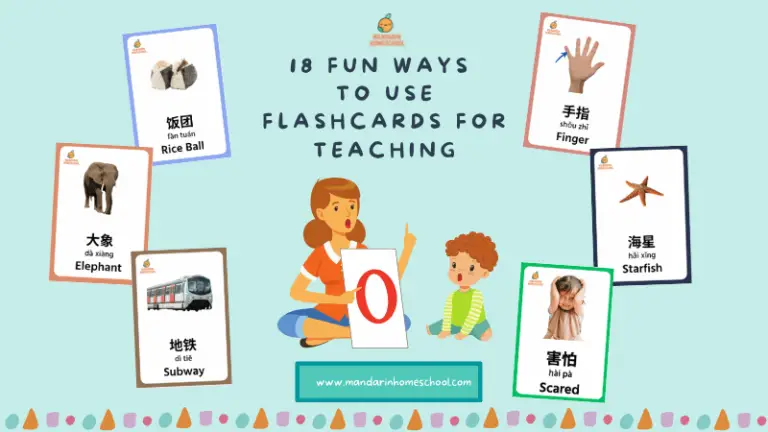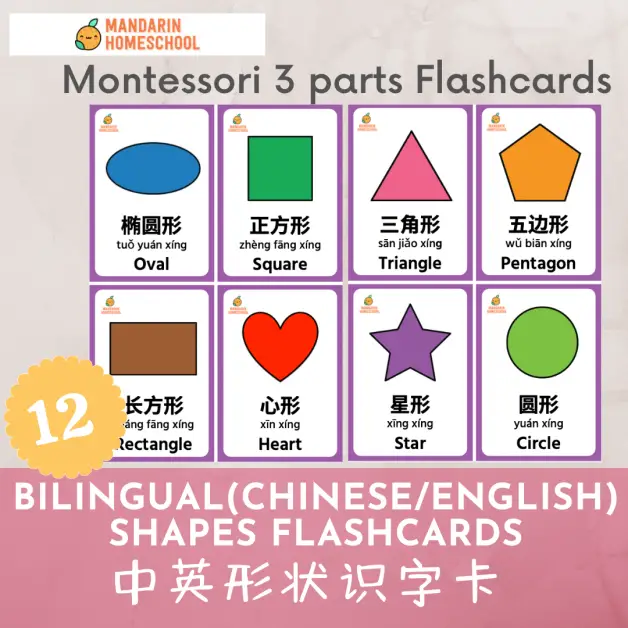This post was first written in 2019, and has been updated in 2023.
Flashcards are a popular tool for teaching a variety of subjects, including vocabulary, math, science, history, and more.
In my career as a special needs educator, I have used my fair share of flashcards for teaching. And in my honest opinion, I find the Montessori 3 part flashcard system to be the most effective and versatile out of them all.
What are Montessori flashcards?
Montessori flashcards are educational cards that are very popular and highly recommended teaching tools for young children learn and practice a variety of concepts, such as letters, numbers, colors, shapes, and more. The cards typically feature simple, clear images or text that are designed to help children develop their vocabulary and cognitive skills.
The cards are often made of sturdy materials, such as cardstock or laminated paper, and are typically designed to be used in a variety of different activities. For example, children may use the cards to play matching games, sort them into categories, or practice spelling and reading words.
Montessori flashcards are just one of many tools used in the Montessori method, which emphasises experiential learning and individualised instruction.
What is the 3 part Montessori flashcards system?
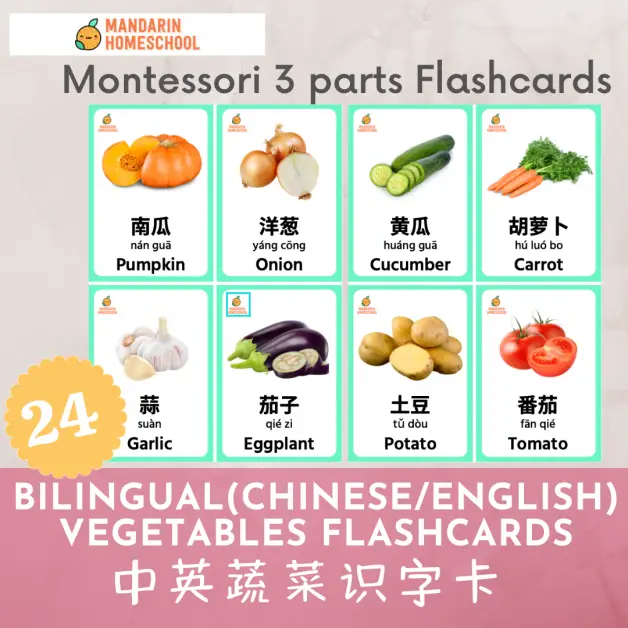
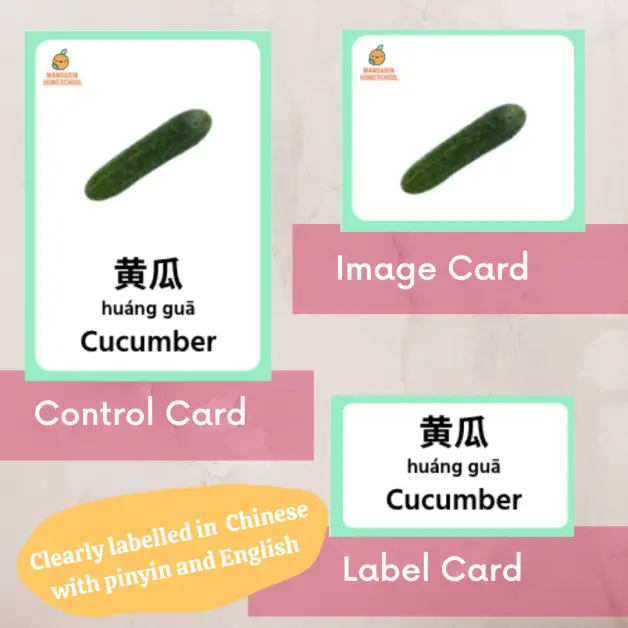
As you can probably gather from the name, there are 3 components to the flashcards.
1st part – Base flashcard, with all the components
2nd part– Picture only
3rd part – Label only
It is a fantastic tool for teaching vocabulary, reading, writing, and classification of objects.
Each set of flashcards is colour coded for ease of organisation.
The pictures should preferably be real objects instead of cartoon cliparts, to aid in understanding and support independent generalisation from flashcards to the real environment.
What is the Mandarin Homeschool bilingual flashcards system?
After months of designing and tweaking my flashcards, I have come up with my own 5 parts bilingual flashcards for teaching both English and Mandarin Chinese to my children.
On top of the original three parts of the Montessori flashcard, I have also separated the language component to Chinese label, pin yin/zhu yin and English label to accommodate students’ varying needs and abilities.
The Mandarin Homeschool bilingual flashcards comes in 3 different language versions
- Simplified Chinese, pinyin and English
- Traditional Chinese, pinyin and English
- Traditional Chinese, zhuyin and English
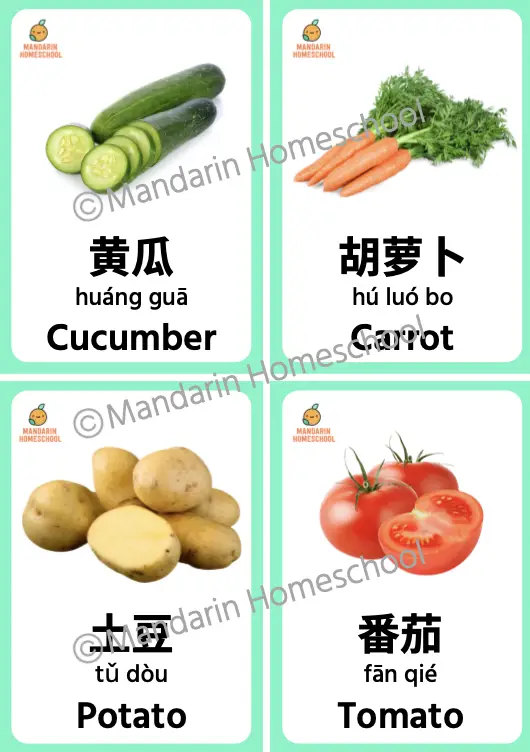
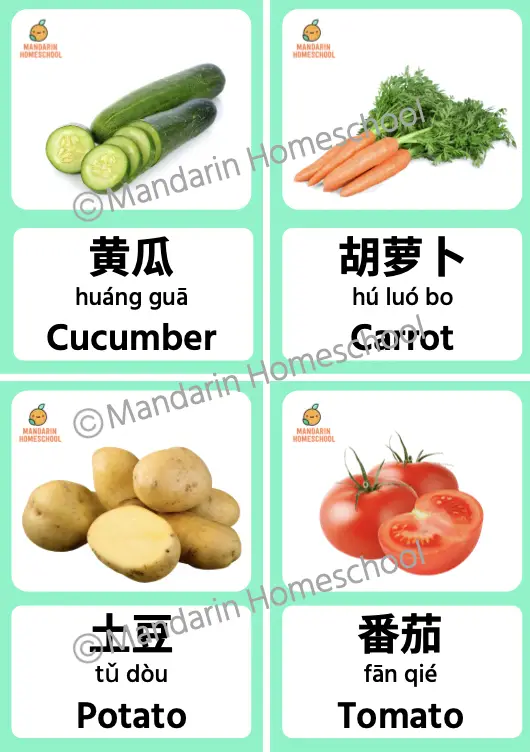
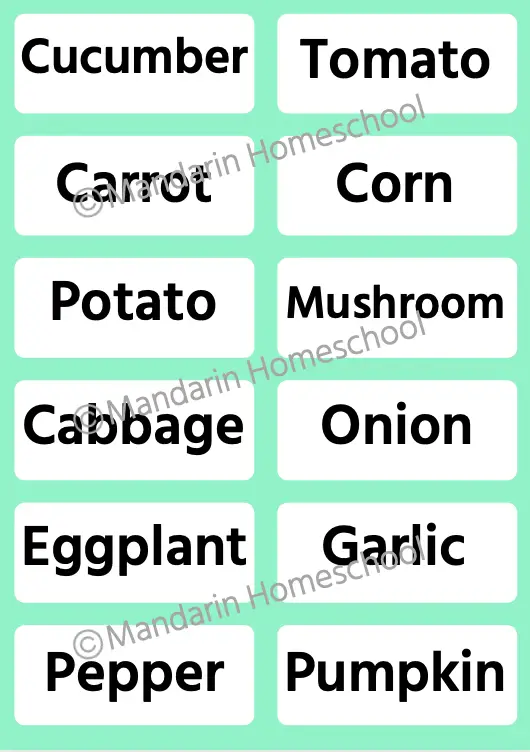
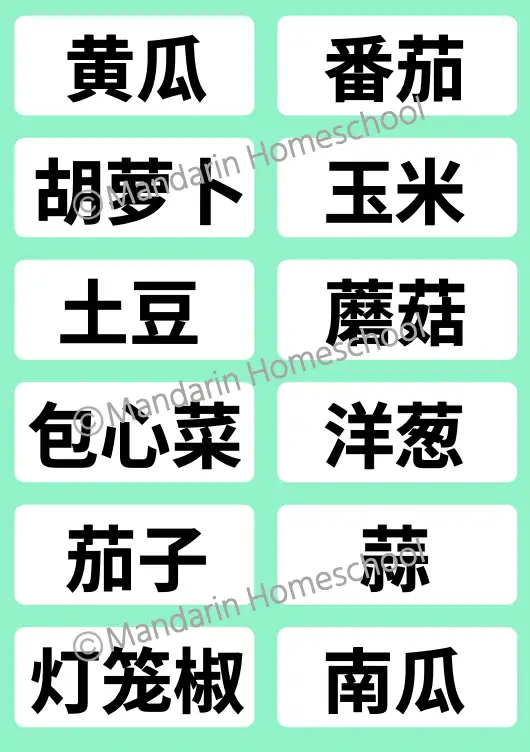
1st part – Base flashcard, with all the components
2nd part– Picture only
3rd part – Label only (Chinese, pinyin and English)
4th part – Chinese word only
5th part – English word only
How do I use it for teaching?

There are so many ways you can use the flashcards. Depending on the age and cognitive level of your student, here are some ideas for you. I have listed them down from the easiest to the most challenging.
- Picture to Picture Matching – Using the second set of flashcards, give the child the picture part to match. Place at least 3 cards down as discriminants (*See rationale below)
- Object to Picture Matching – Give the child real objects or plastic objects to match to the picture card.
- Picture naming – Showing only one picture card at a time, name the picture clearly for your child
- Receptive Language (Basic) – Place at least 3 picture cards down for discimination (*See rationale below). Ask your child to “show me (Label)”.
- Expressive language (Basic) – Ask your child “What is this?”, starting with the picture cards, and then moving on to the actual object.
- Sorting (Basic) – Give your child all component cards and have them match it to the base card.
- Receptive Language – (Intermediate) – Place at least 3 language component cards down for discimination. Ask your child to “show me (Label)”.
- Expressive Language – (Intermediate) – Ask your child “What is this?/What does this say” and point to the language component cards.
- Sorting (Intermediate) – Without giving your child the base card, have your child match all the language component cards to the picture card.
*Rationale for having at least 3 cards as discrimination. For younger students, when they are learning something new, they may guess and while it may be tempting to reduce the number of cards, 2 cards means they have a 50% chance of getting the correct answer without even understanding the concept. So NEVER place 2 cards down only!
~Note: I suggest printing the cards on cardstock or if you have a laminator to laminate them, so you can get multiple uses out of it
For additional flashcard teaching activities, read this blog post for 18 fun ideas!
FREE Bilingual Flashcards
Here is a free set of the 5 part bilingual flashcards for you to try out. If you like them and find them useful for your personal teaching, please leave a comment here or drop me a line at jean@mandarinhomeschool.com!
More flashcards can be purchased here from my Mandarin Homeschool TpT store. I have 16 themes and more to come as I find time to make them!


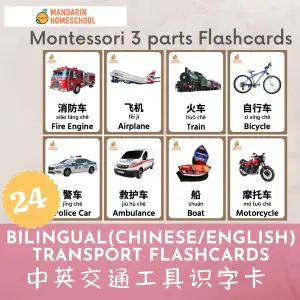





Flashcards are an effective tool for teaching, but how you use them will depend on your teaching style, the subject matter, and the needs of your students. Experiment with different approaches until you find what works best for you and your little Chinese learners.
The most important thing is to have fun while you are teaching/learning!
To find out more about Montessori flashcards, check out these two sites:

